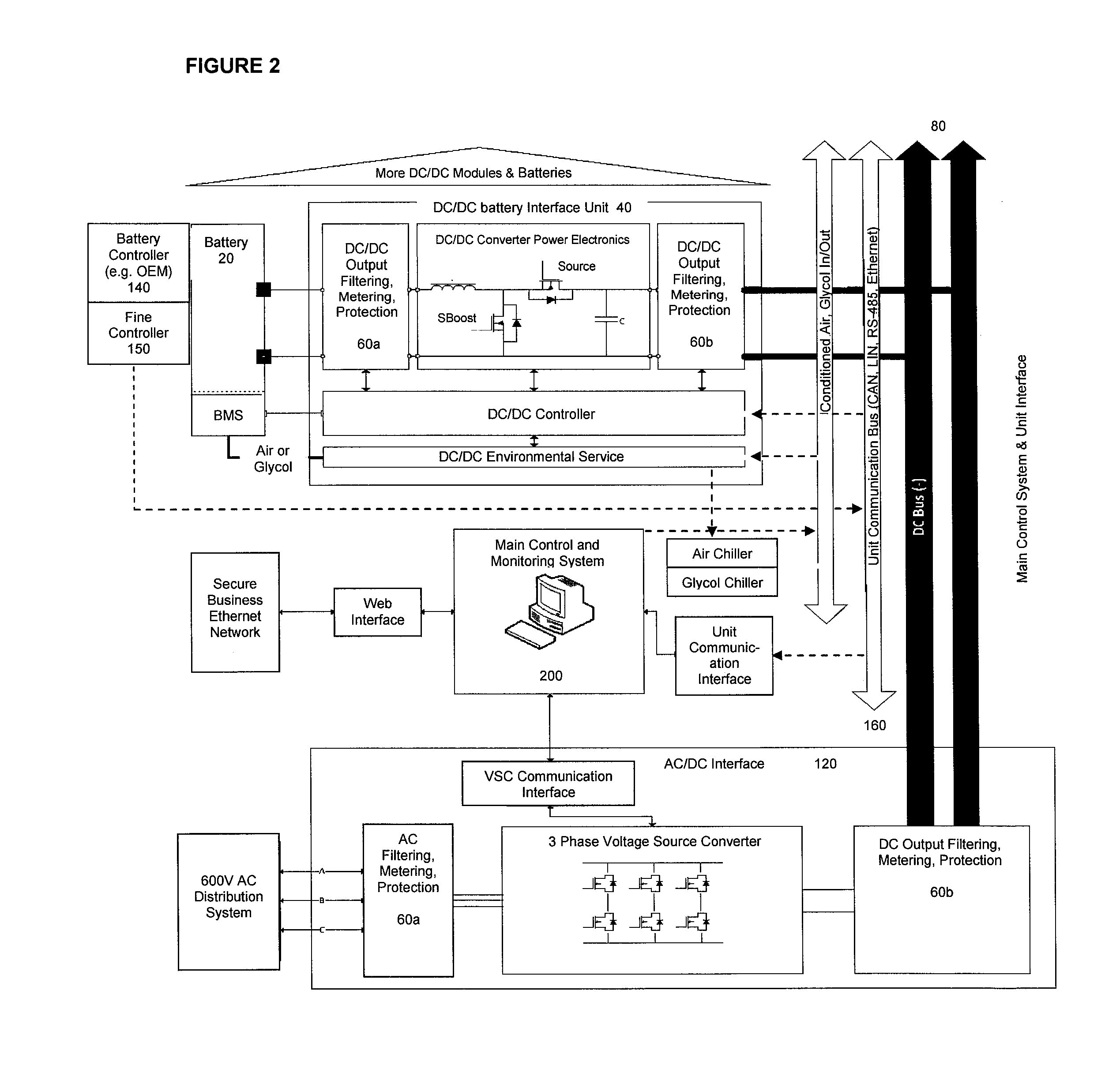Heterogeneous Energy Storage System and Associated Methods
- Summary
- Abstract
- Description
- Claims
- Application Information
AI Technical Summary
Benefits of technology
Problems solved by technology
Method used
Image
Examples
Embodiment Construction
[0077]Referring to the accompanying drawings there is illustrated the fundamental system and methods of the present invention for an improved management and operation of electricity storage systems involving multiple electricity storage units of heterogeneous states of health.
[0078]FIG. 1 is a simple diagrammatic illustration of an example of the novel energy storage system 10, which may be a 150 kWhr-rated system. In a basic example of the system, a plurality of batteries (two of which are exemplified as 20a and 20b) is provided in each module. Each module itself can comprise of multiple batteries connected in series, but it should be noted that a module can simply contain a single battery, or it can comprise multiple batteries connected in parallel as well as in series, depending on the desired capacity (e.g. voltage and current) rating of the module. For the present illustration, the rating of each module is 300-700 VDC.
[0079]The number (N) of modules included in the system would...
PUM
 Login to View More
Login to View More Abstract
Description
Claims
Application Information
 Login to View More
Login to View More - R&D
- Intellectual Property
- Life Sciences
- Materials
- Tech Scout
- Unparalleled Data Quality
- Higher Quality Content
- 60% Fewer Hallucinations
Browse by: Latest US Patents, China's latest patents, Technical Efficacy Thesaurus, Application Domain, Technology Topic, Popular Technical Reports.
© 2025 PatSnap. All rights reserved.Legal|Privacy policy|Modern Slavery Act Transparency Statement|Sitemap|About US| Contact US: help@patsnap.com



